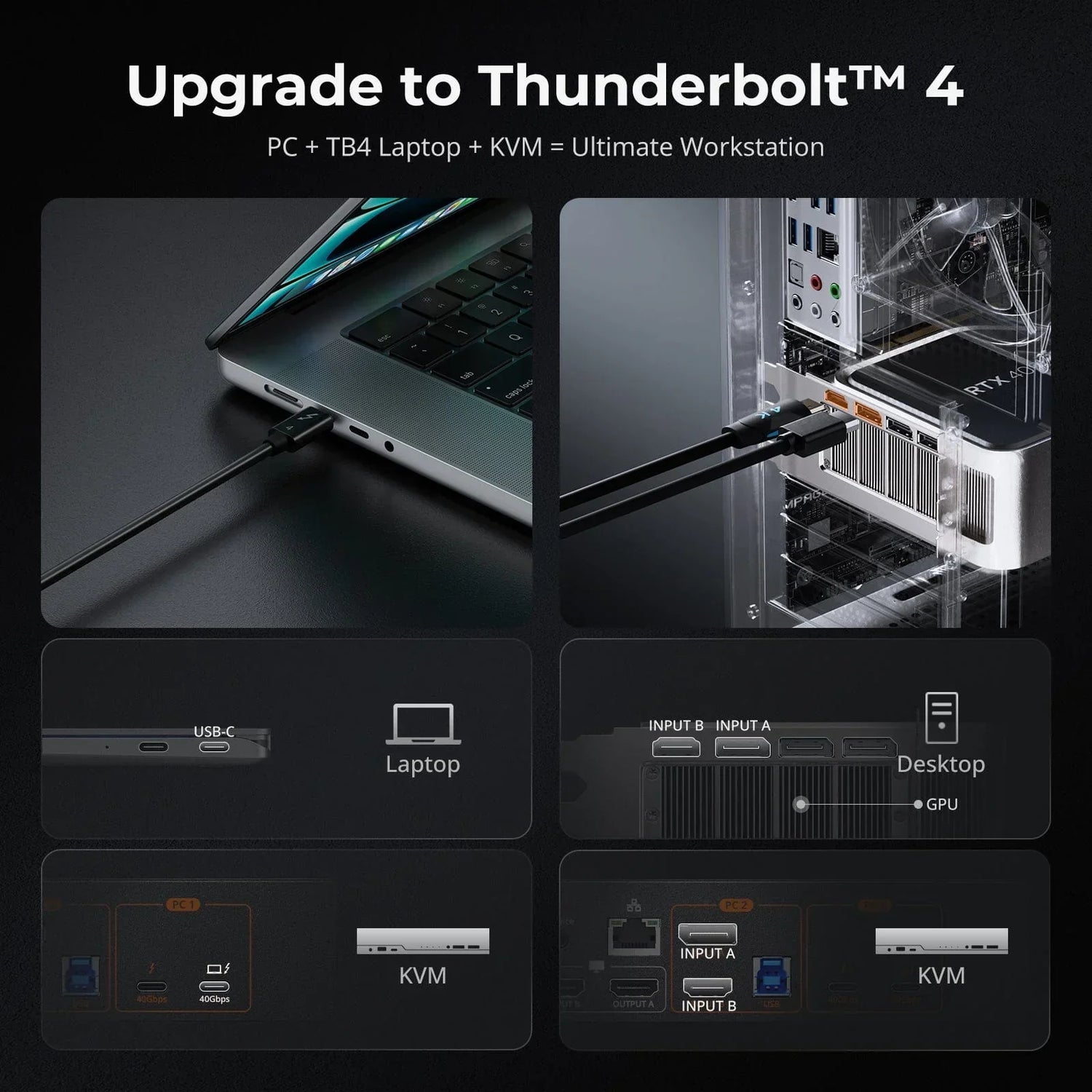In today's modern tech-savvy world, we often find ourselves needing to use multiple computers or devices simultaneously. Whether it's in the office, a home office, or a data center, efficient management of these devices is crucial for improving productivity. This is where KVM (Keyboard, Video, Mouse) switches come into play as powerful tools that allow us to seamlessly switch, control, and manage multiple devices. In this article, we will delve deep into various aspects of KVM switches, providing you with a comprehensive understanding and buying advice.
What Is a KVM Switch?
A KVM switch, short for Keyboard, Video, Mouse switch, is a device that allows you to connect one keyboard, one monitor, and one mouse to multiple computers or servers. This means you only need to maintain one workstation to effortlessly manage multiple devices. No longer do you need to configure separate keyboards, monitors, and mice for each computer, simplifying device management significantly.
How Does a KVM Switch Work?
The working principle of a KVM switch is straightforward yet powerful. It connects multiple devices to a single host, and you can choose which device to control through a switching button, remote control, or even hotkeys. This means you can quickly switch to different computers or servers by pressing specific key combinations on the keyboard or buttons on the remote control. This makes managing multiple devices a breeze.
Types of KVM Switches
KVM switches are typically divided into two categories: standard KVM switches and IP-based KVM switches.
Standard KVM Switches: These switches are suitable for small-scale environments, typically with a limited number of connected devices. They are ideal for home offices or small offices, providing simple and stable device management.
IP-based KVM Switches: These switches allow remote management of devices, irrespective of your physical location, as long as you have an internet connection. For large data centers or enterprises requiring global access, IP-based KVM switches are the ideal choice, offering excellent scalability and flexibility.
Do You Need a KVM Switch?
At times, you might wonder if there are alternative solutions to address the challenge of managing multiple devices. Some alternatives include serial console servers and in-band monitors. However, it's important to note that these alternatives may not be as flexible as KVM switches and can often be more costly. KVM switches provide the simplest and most cost-effective solution for managing multiple devices.
Applications of KVM Switches
Audio and Video Production Studios: Studios for music recording, film editing, or broadcasting often require multiple computers to handle audio and video signals. KVM switches enable producers to quickly switch and control these computers, ensuring smooth audio and video production workflows.
Healthcare: Hospitals and medical institutions use KVM switches to manage multiple medical devices and workstations. This is crucial for doctors and technicians who need fast access to and control of various medical devices such as X-ray machines, ultrasound devices, and electronic medical record systems.
Financial Institutions: The financial industry often requires simultaneous access to multiple financial terminals and data sources. KVM switches allow traders and financial analysts to switch between different terminals and quickly respond to market changes.
Educational Institutions: Education technology centers in schools and universities use KVM switches to manage multiple computers and educational devices. Educators can easily switch to different computers for teaching presentations and training.
Industrial Automation: In factory and production environments, KVM switches are used to monitor and control various automation systems, from robot operations to production line management, to enhance production efficiency and quality.
Research Laboratories: Researchers use KVM switches to manage multiple computers in laboratories for data analysis, simulations, and experiment control. This is crucial in various research fields, including life sciences, physics, and engineering.
How to Choose the Right KVM Switch?
Supported Resolutions: Ensure that the KVM switch supports the resolution requirements of your devices for the best visual experience.
Connection Types: Consider the connection types between devices, such as HDMI, DisplayPort, or VGA, to ensure compatibility with your devices.
Device/Display Capacity: Ensure that the switch can accommodate all the devices and displays you need to manage.
Switching Methods: Understand the switching methods of different switches and choose the one that best suits your needs, such as buttons, remote controls, or hotkeys.
Installation and Troubleshooting
While installing a KVM switch is generally straightforward, attention to details like cable management and the correct use of adapters is important. Additionally, understanding the different versions of USB (1.1, 2.0, 3.0) is crucial to ensure proper device functionality. It's advisable to familiarize yourself with common troubleshooting methods in advance to quickly address any issues that may arise.
When choosing a KVM switch from the TESmart brand, you can trust their years of experience in providing high-quality device management solutions. Their products offer outstanding performance and stability, making it easy for you to manage multiple devices.
In conclusion, KVM switches are ideal tools for managing multiple devices and are applicable in various scenarios. Choosing the right KVM switch to meet your needs, ensuring proper installation, and understanding troubleshooting methods will help improve efficiency and convenience in managing multiple devices. TESmart's products provide reliable support for a seamless device management experience.




